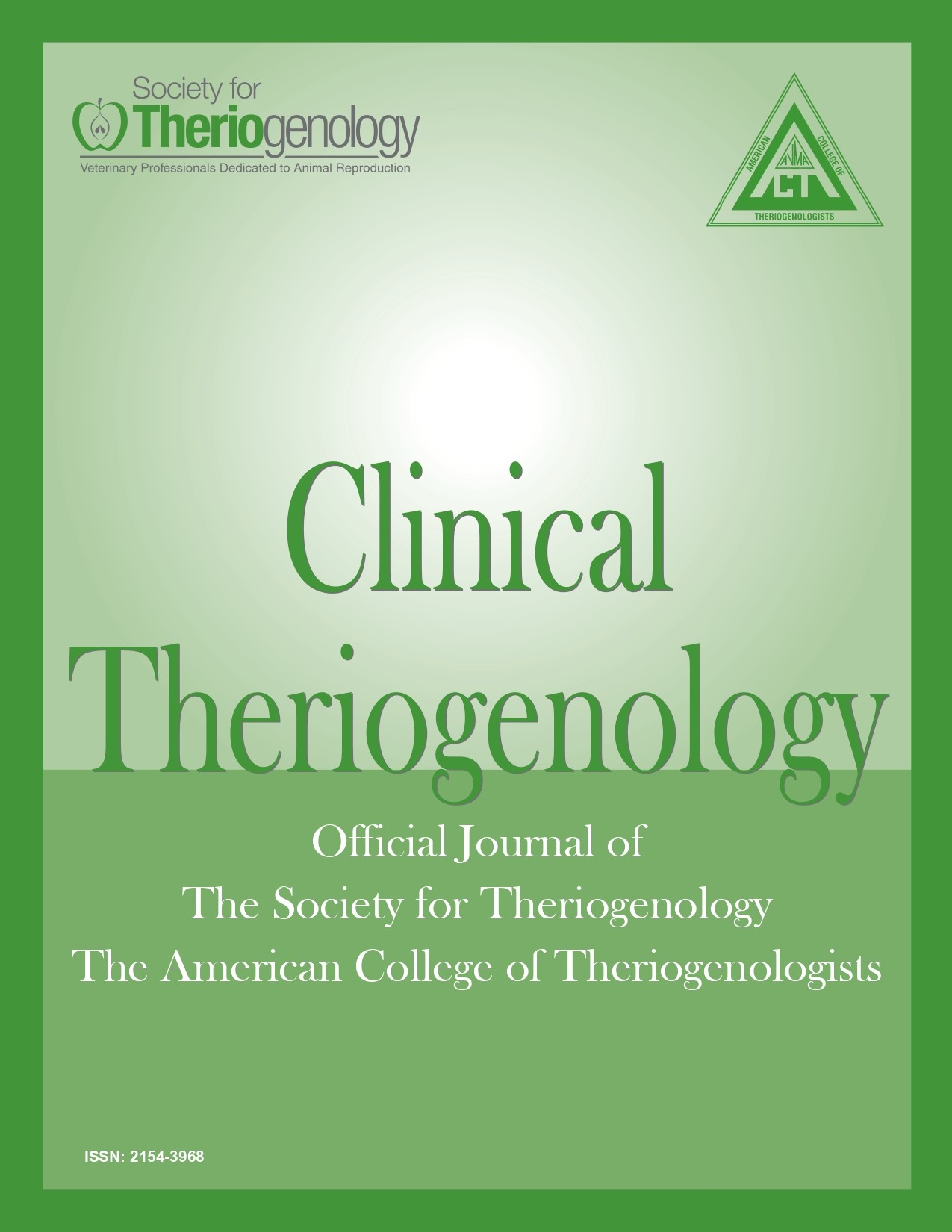Embryonic diapause: a unique stage of development
Abstract
Embryonic diapause is a unique stage of development that occurs in some mammalian species. Diapause serves as an evolutionary reproductive strategy to maximize the survivability of dam and offspring. Although individual mechanisms of control vary among species, the overarching physiology of diapause extends the length of pregnancy to delay parturition until either seasonal, environmental, nutritional, or internal physiologic constraints are optimal for parturition and rearing of young. This review discusses concepts and highlights control mechanisms unique to rodents, mink, and tammar wallabies.
Downloads
References
2. Renfree MB, Shaw G: Diapause. Annu Rev Physiol 2000;62:353-375. doi: 10.1146/annurev.physiol.62.1.353
3. Lopes FL, Desmarais JA, Murphy BD: Embryonic diapause and its regulation. Reproduction 2004;128:669-678. doi: 10.1530/rep.1.00444
4. Rüegg AB, Bernal S, Moser FN, et al: Trophectoderm and embryoblast proliferate at slow pace in the course of embryonic diapause in the roe deer (Capreolus capreolus). Biosci Proc 2020;10:181-196. doi: 10.1530/biosciprocs.10.013
5. Renfree MB, Fenelon JC: The enigma of embryonic diapause. Development 2017;144:3199-3210. doi: 10.1242/dev.148213
6. Long JA, Evans HM: The oestrous cycle in the rat and its associated phenomena. Mem Univ Calif 1922;6:1-148.
7. Weichert CK: The experimental shortening of delayed pregnancy in the albino rat. Anat Rec 1940;77:31-47. doi: 10.1002/ar.1090770105
8. Mantalenakis SJ, Ketchel MM: Frequency and extent of delayed implantation in lactating rats and mice. J Reprod Fertil 1966;12:391-394. doi: 10.1530/jrf.0.0120391
9. Flint AP, Renfree MB: Bromocriptine-induced implantation during lactation in the rat. J Reprod Fertil 1981;62:181-183. doi: 10.1530/jrf.0.0620181
10. Yoshinaga K, Adams CE: Delayed implantation in the spayed, progesterone treated adult mouse. J Reprod Fertil 1966;12:593-595. doi: 10.1530/jrf.0.0120593
11. Murphy BD, James DA: The effects of light and sympathetic innervation to the head on nidation in mink. J Exp Zool 1974;187:267-276. doi: 10.1002/jez.1401870210
12. Murphy BD, Concannon PW, Travis HF, et al: Prolactin: the hypophyseal factor that terminates embryonic diapause in mink. Biol Reprod 1981;25:487-491. doi: 10.1095/biolreprod25.3.487
13. Deng L, Chunjin L, Chen L, et al: Research advances on embryonic diapause in mammals. Anim Reprod Sci 2018;198:1-10. doi: 10.1016/j.anireprosci.2018.09.009
14. Papke RL, Concannon PW, Travis HF, et al: Control of luteal function and implantation in the mink by prolactin. J Anim Sci 1980;50:1102-1107. doi: 10.2527/jas1980.5061102x
15. Murphy BD: Precocious induction of luteal activation and termination of delayed implantation in mink with the dopamine antagonist pimozide. Biol Reprod 1983;29:658-662. doi: 10.1095/biolreprod29.3.658
16. Renfree MB, Tyndale-Biscoe CH: Intrauterine development after diapause in the marsupial Macropus eugenii. Dev Biol 1973;32:28-40. doi: 10.1016/0012-1606(73)90217-0
17. Rudd CD: Sexual behavior of the male and female tammar wallabies (Macropus eugenii) at post-partum oestrus. J Zool 1994;232:151-162. doi: 10.1111/j.1469-7998.1994.tb01565.x
18. Hinds LA, Tyndale-Biscoe CH: Plasma progesterone levels in the pregnant and non-pregnant tammar, Macropus eugenii. J Endocrinol 1982;93:99-107. doi: 10.1677/joe.0.0930099
19. Tyndale-Biscoe CH, Hearn JP: Pituitary and ovarian factors associated with seasonal quiescence of the tammar wallaby, Macropus eugenii. J Reprod Fertil 1981;62:225-230. doi: 10.1530/jrf.0.0630225
20. Hardy K, Spanos S: Growth factor expression and function in the human and mouse preimplantation embryo. J Endocrinol 2002;172:221-236. doi: 10.1677/joe.0.1720221
21. Bhatt H, Brunet LJ, Stewart CL: Uterine expression of leukemia inhibitory factor coincides with the onset of blastocyst implantation. Proc Natl Acad Sci USA 1991;88:11408-11412. doi: 10.1073/pnas.88.24.11408
22. Stewart CL, Kaspar P, Brunet LJ, et al: Blastocyst implantation depends on maternal expression of leukaemia inhibitory factor. Nature 1992;359:76-79. doi: 10.1038/359076a0
23. Threadgill DW, Dlugosz AA, Hansen LA, et al: Targeted disruption of mouse EGF receptor: effect of genetic background on mutant phenotype. Science 1995;269:230-234. doi: 10.1126/science.7618084
24. Mohamed OA, Jonnaert C, Labelle-Dumais K, et al: Uterine WNT/beta-catenin signaling is required for implantation. Proc Natl Acad Sci USA 2005;102:8579-8584. doi: 10.1073/pnas.0500612102
25. Cha J, Sun X, Bartos A, et al: A new role for muscle segment homeobox genes in mammalian embryonic diapause. Open Biol 2013;3:130035. doi: 10.1098/rsob.130035
26. Fenelon JC, Banerjee A, Murphy BD: Embryonic diapause: development on hold. Int J Dev Biol 2014;58:163-174. doi: 10.1387/ijdb.140074bm
27. Cha J, Dey SK: Cadence of procreation: orchestrating embryo-uterine interactions. Semin Cell Dev Biol 2014;34:56-64. doi: 10.1016/j.semcdb.2014.05.005

This work is licensed under a Creative Commons Attribution-NonCommercial 4.0 International License.
Authors retain copyright of their work, with first publication rights granted to Clinical Theriogenology. Read more about copyright and licensing here.





